
The Baptistery of San Giovanni or Baptistery of St. John (Battistero di San Giovanni) is a medieval baptistery in Florence, which has the status of a minor basilica, is one of the oldest buildings in the city and a UNESCO World Heritage Site.
The Baptistery is also known as the Baptistery of Florence or the Florence Baptistery.
The Baptistery can be visited.
The Baptistery is part of the general complex of buildings that make up the Florence Cathedral (Santa Maria del Fiore), located in the heart of Florence, on the Duomo Square (Cathedral Square, Piazza del Duomo) and St. John's Square (Piazza di San Giovanni, Piazza San Giovanni).

View of the baptistery from the observation deck of the Giotto bell towerThe Baptistery is one of the oldest churches in Florence.
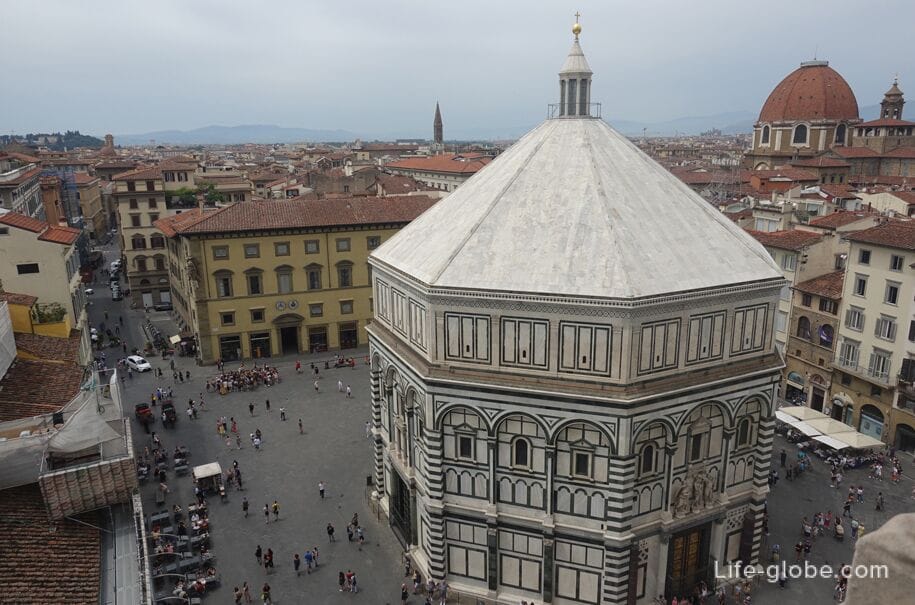
It was built between 1059 and 1128 in the Florentine Romanesque style on the site of an ancient Roman temple of the IV-V centuries dedicated to Mars, the patron god of old Florence.
The consecration of the baptistery took place on November 6, 1059 by Pope Nicholas II in honor of St. John the Baptist.
Around 1150, an octagonal lantern was attached to the roof of the baptistery. In 1202, the baptistery was expanded with a rectangular entrance porch leading to the original western entrance to the building. Later, the baptistery received its external and internal decorations, including Renaissance details in the form of columned portals with capitals, window frames with columns and triangular pediments.
Until the 19th century, the Baptistery of San Giovanni baptized natives of Florence, including members of the Medici family and the poet Dante Alighieri.
The baptistery has an octagonal farm with a rectangular extension on the west side, and its outer walls are lined with colored marble with geometric patterns. The exterior of the baptistery is decorated with a number of artistically significant statues, including works by Andrea Sansovino (above the Gates of Paradise) and Giovan Francesco Rustici, Vincenzo Danti (above the southern doors).
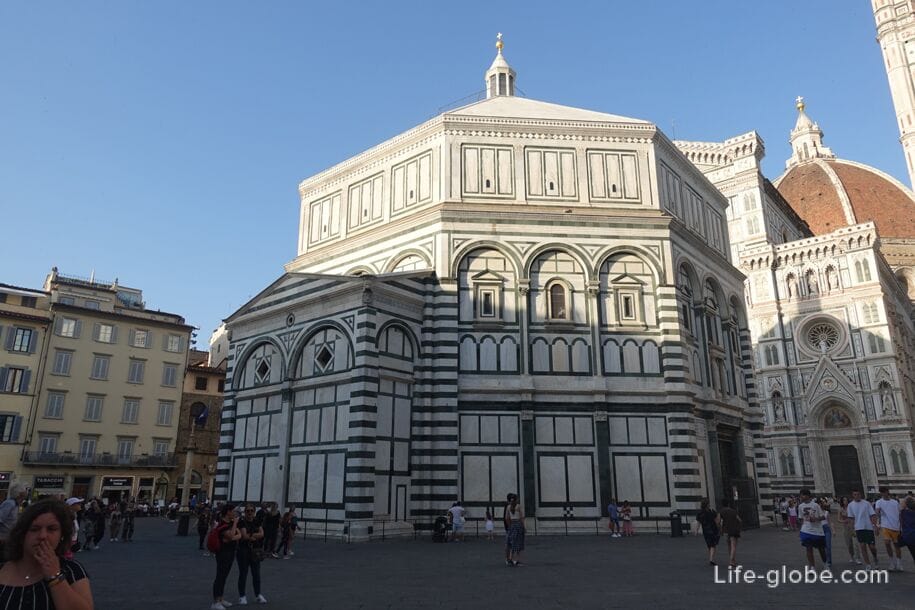
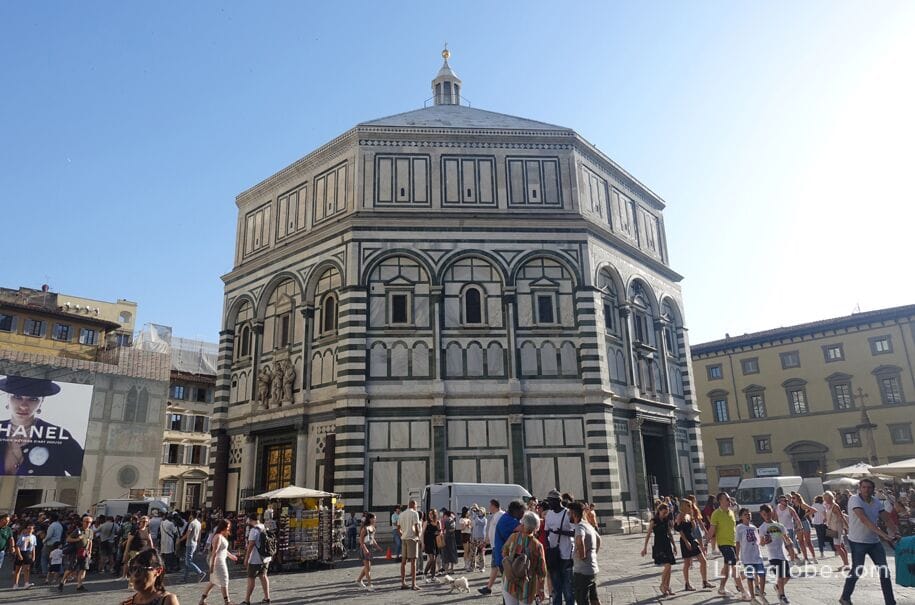
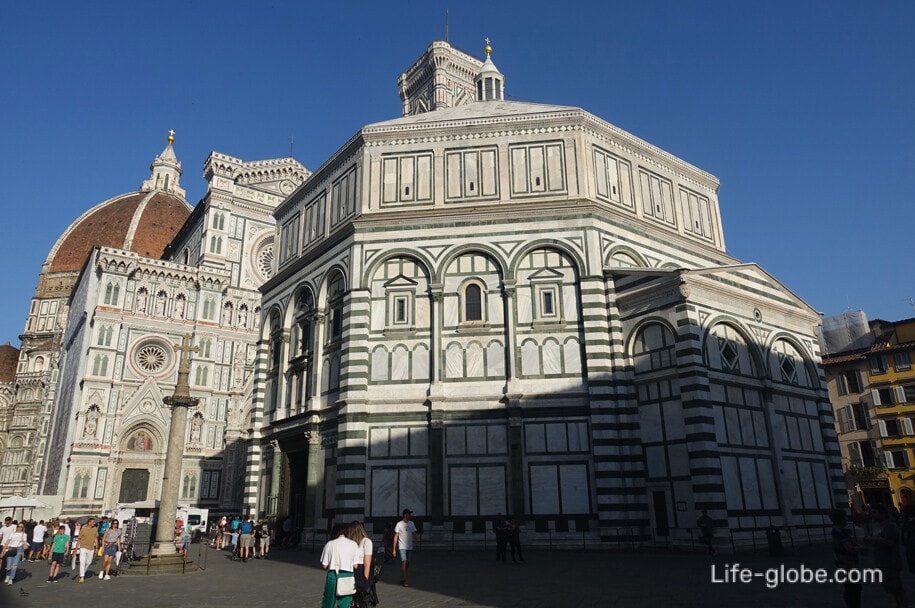
The Baptistery is known for its three sets of bronze doors with artistic value and relief sculptures.
The oldest are the south doors, created between 1330 and 1336 by the sculptor Andrea Pisano. The doors depict episodes from the life of the Baptist in the top twenty sections and Christian virtues in the remaining eight.
The northern gate was built second. The doors represent scenes from the New Testament on the top twenty panels and the evangelists and four church fathers on the bottom eight panels.
The most famous eastern gate was created in 1425-1452. They, like the north gate, are the work of Lorenzo Ghiberti and his assistants. Michelangelo called these gates "The Gates of Paradise". The doors have ten large squares, five in one vertical row on each leaf. The reliefs show scenes from the Old Testament, which follow one another from left to right and from top to bottom. The frames are decorated with images of the prophets; at the bottom, the sculptor placed his portrait and his son Vittorio. The bronze of the doors is gilded and sparkles brightly in the sun. Above the gate there is a group of statues depicting the Baptism of Christ by Andrea Sansovino.

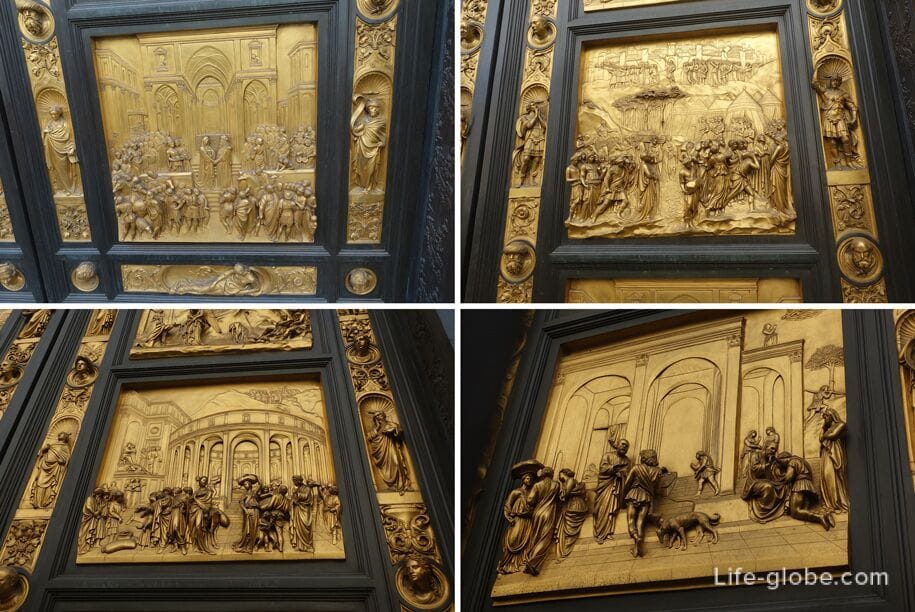
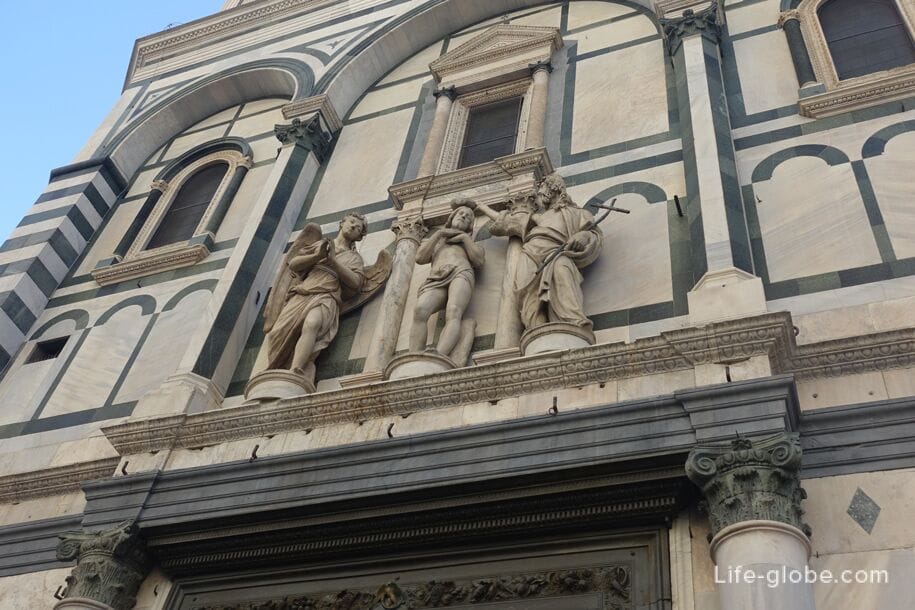
Groups of statues above the gate, as well as the gate itself, and some grandiose works of art originally located inside the baptistery, such as the Maddalena di Donatello or the Silver Altar, etc., can now be seen in the Museo dell'Opera del Duomo, located behind the cathedral; and in the baptistery there are copies.
The interior of the baptistery is divided into a lower part with columns and pilasters, a middle one with window openings and an upper one with a mosaic dome.
The walls are lined with dark green and white marble inlaid with geometric patterns. The niches are separated by monolithic columns of Sardinian granite. Marble cladding of the interior was started in the second half of the 11th century.
The floor is lined with a complex mosaic marble coating.
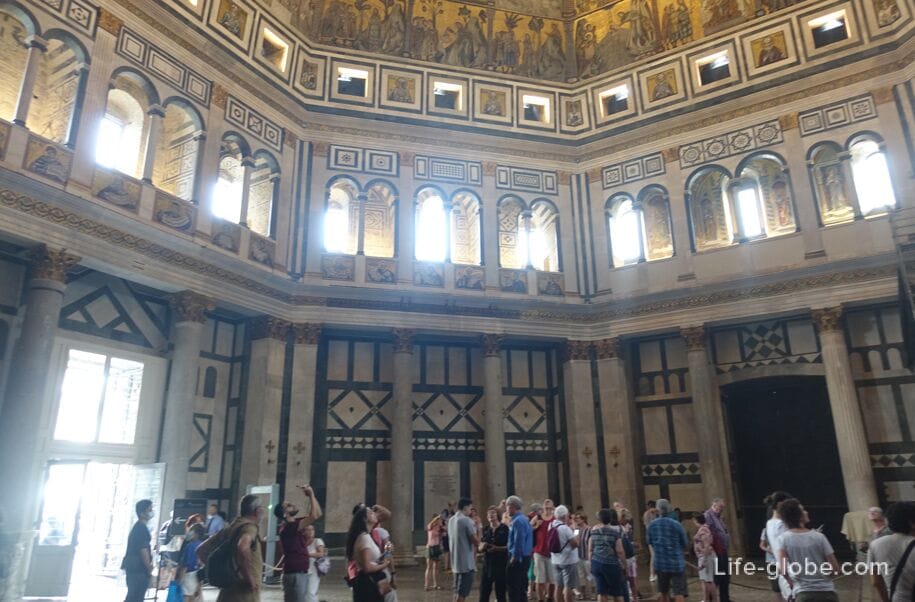
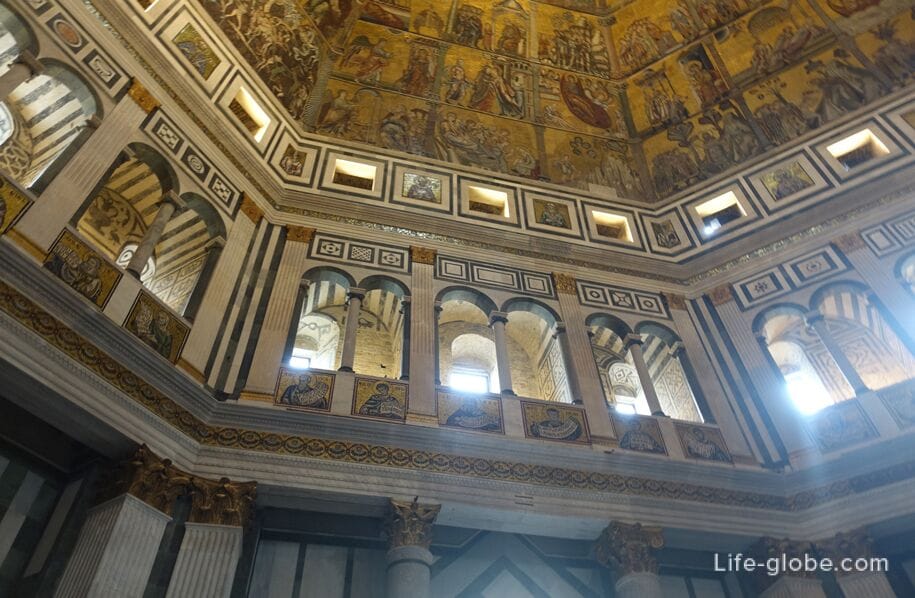
In the baptistery, the bright mosaic of the dome is particularly striking.
The mosaics are dominated by a huge figure of Christ the Judge with scenes of the Last Judgment occupying three of the eight segments of the dome. The superimposed horizontal registers of the other five segments depict the stories of St. John the Baptist, the patron saint of Florence, Christ, Joseph and the Book of Genesis. In the center, in the highest register, are the angelic hierarchies.
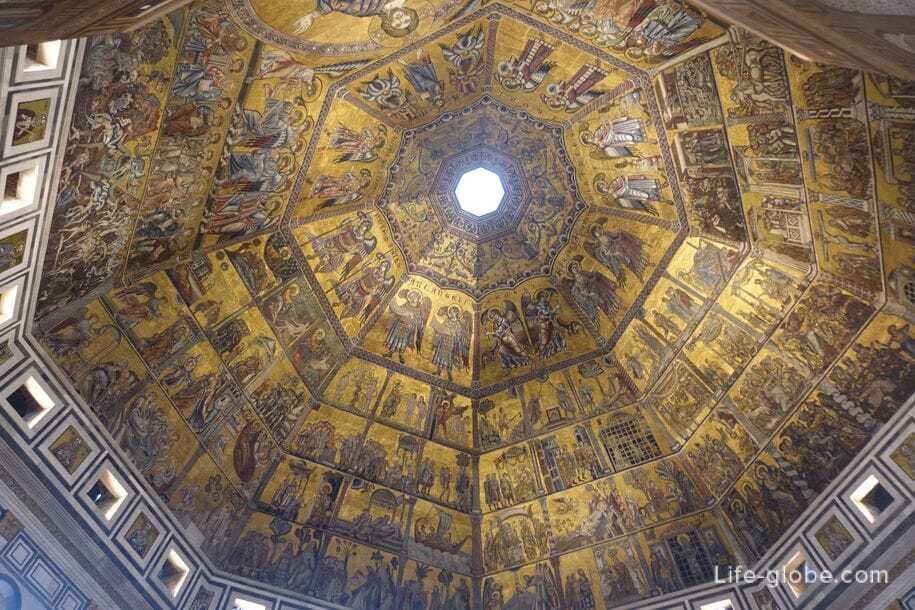
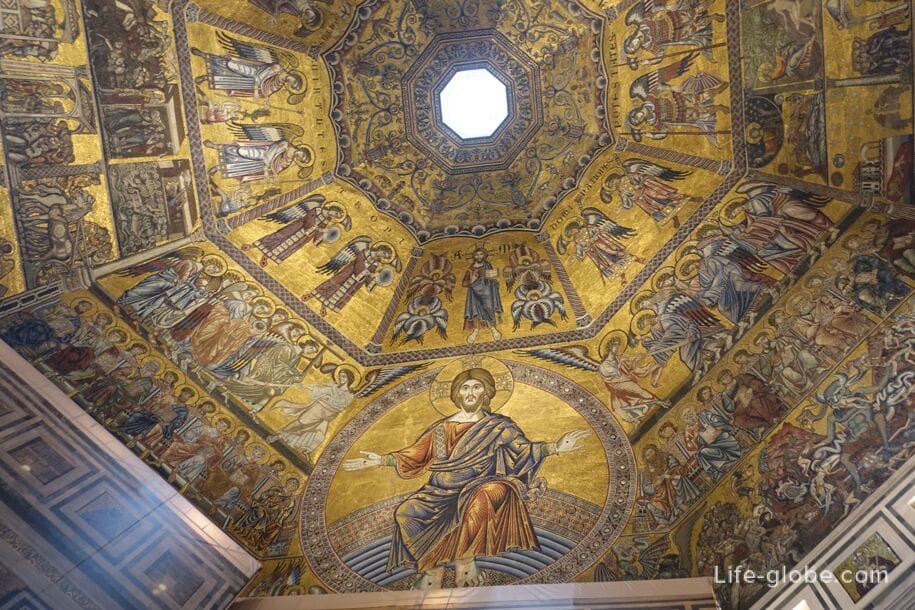

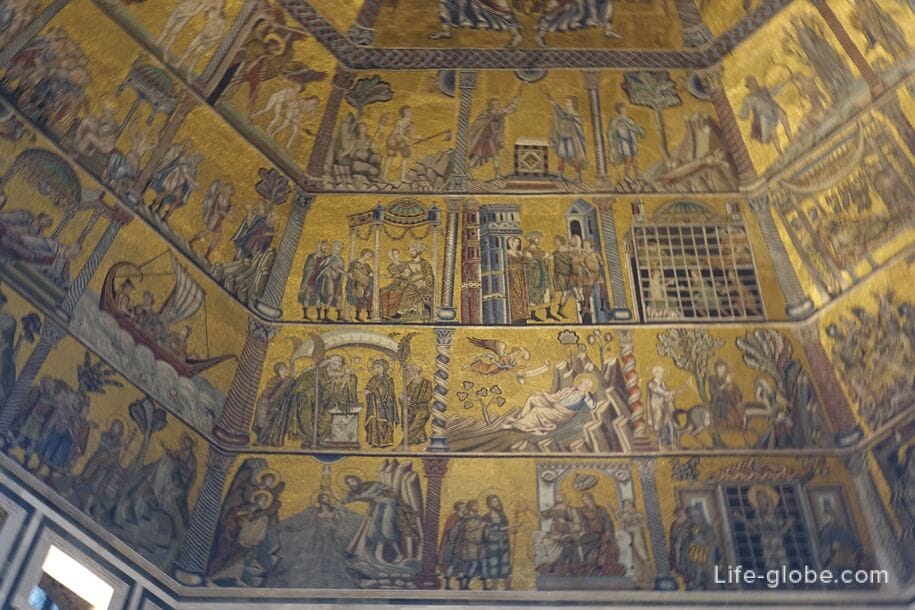

In the baptistery there is a monumental bronze-marble tomb of Antipope John XXIII by Donatello and Michelozzo Michelozzi.
The gilded statue, facing the visitors of the baptistery, rests on its deathbed, supported by two lions, under a canopy of gilded drapery. The antipope bequeathed several relics and his huge fortune to this baptistery.


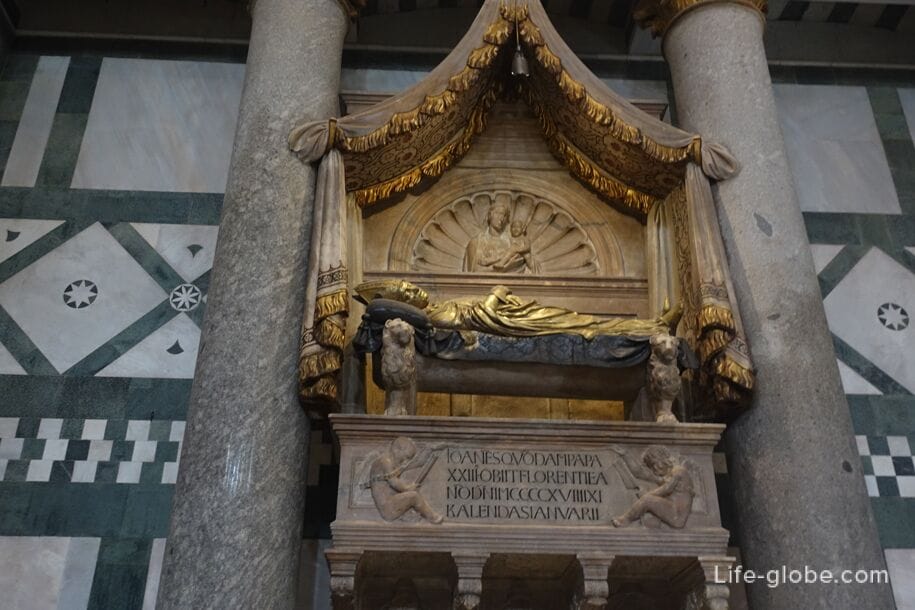
Also notable in the baptistery is the altar of St. John, originally designed by Antonio del Pollaiolo in 1483 from silver.
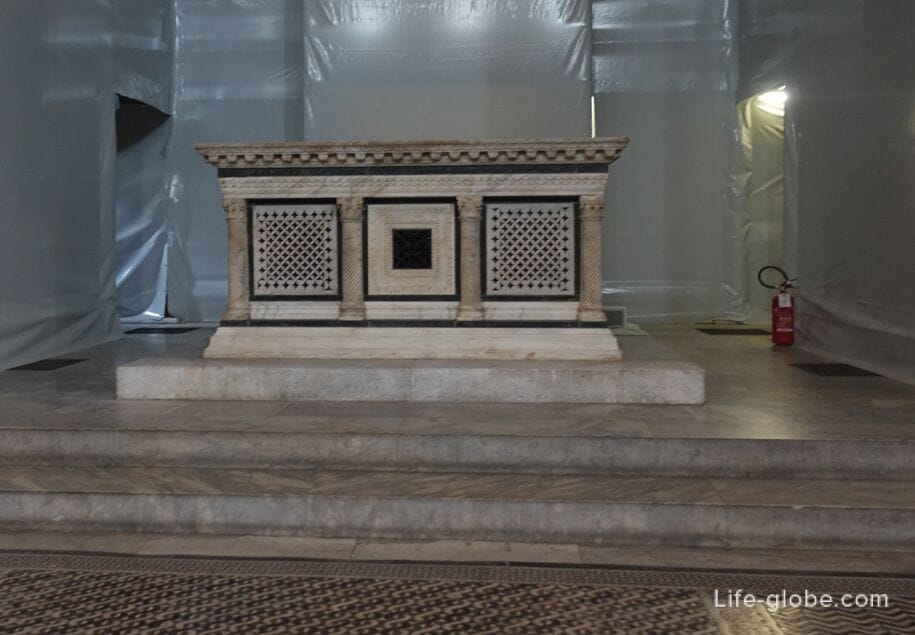
A visit to the Baptistery of San Giovanni is paid by ticket.
A visit to the baptistery is included in the single tickets for visiting the ensemble of monuments of the Santa Maria del Fiore complex, which, in addition to the baptistery, also includes: the Giotto bell tower with viewing platforms, the Brunelleschi dome with an observation deck, the Opera Duomo Museum and the ancient Basilica of Santa Reparata under the cathedral.
There are various combinations of tickets. Tickets can be purchased online or at the ticket offices (information centers) on the square near the cathedral.
We recommend that you check the exact and detailed information about tickets and their cost, the opening hours of the facilities of the complex and other information on the official website of the complex: duomo.firenze.it.
All accommodation facilities in Florence (hotels, apartments, guest houses, etc.), including in the historical center of the city and more remotely from it, can be viewed and booked here